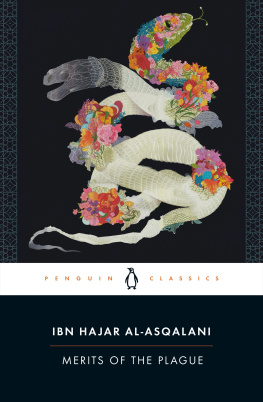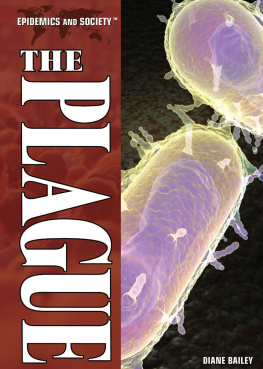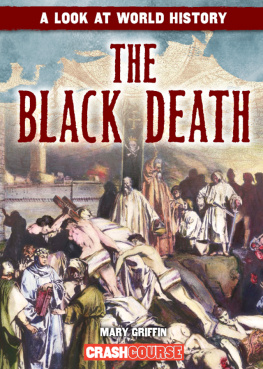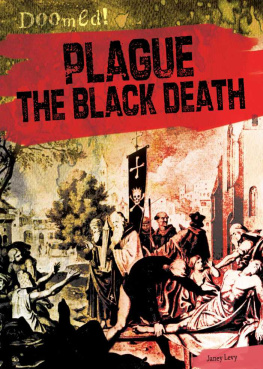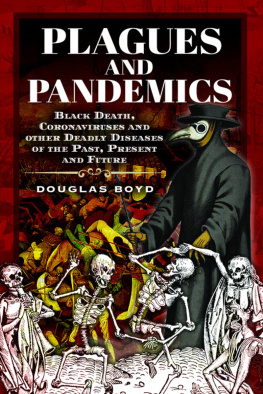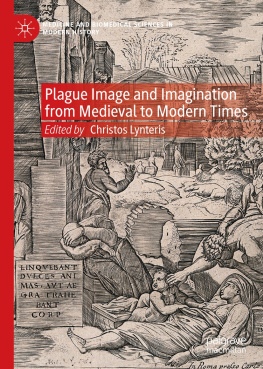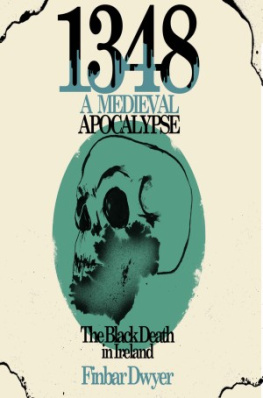John Aberth is a historian of the Middle Ages who lives in Roxbury, Vermont. He received his PhD in Medieval History from the University of Cambridge in England and has published ten academic books. His latest books include The Black Death: A New History of the Great Mortality in Europe, 13471500, which came out with Oxford University Press in October 2020, and Doctoring the Black Death: Medieval Europes Medical Response to Plague, published with Rowman & Littlefield in June 2021. He has also published Plagues in World History and The Black Death: The Great Mortality of 13481350. A Brief History with Documents, now in its second edition. Currently he is writing a series of novels set during the Black Death. He has taught, both full- and part-time, at numerous universities and colleges, including the University of NebraskaOmaha, University of Vermont, Norwich University, Middlebury College, Skidmore College, and St. Michaels College. In his spare time, he rides horses and rehabilitates injured wildlife.
W RITING A FULLY COMPREHENSIVE HISTORY of the medieval medical response to the Black Death is a daunting task. The some-240 plague treatises that form the basis of this study were written in no less than nine languages: Latin, German, Dutch, Spanish, Italian, French, English, Hebrew, and Arabic. As I cant pretend to know all these languages, I must here acknowledge the assistance of translators who generously donated their time and skills at reduced rates of pay to translate for me treatises in languages I cannot read: Russell Hopley for Arabic; Rabbi Nathan Bushwick for Hebrew; Thomas Huber for German and Dutch; and Stefano Mula of Middlebury College for Italian. All other translations are my own, and I take full responsibility for them. To paraphrase the Aragonese physician Blasius of Barcelona, if anything I have written be badly put, I pray, with no ill will, that anyone at all should correct it.
Sources: Berlin, Staatsbibliothek, MS lat. qu. 274, fols. 36v.37r.; Cambridge, University Library, MS Ii.1.31, fol. 107r.; Erfurt, Universitt Erfurt, Forschungsbibliothek Gotha, Chart. A 501, fols. 274v.278r., 280r.v., 283r.; Leipzig, Universittsbibliothek, MS 1162, fols. 356r., col. a, 357r., col. b, 360v., col. c; Leipzig, Universittsbibliothek, MS 1227, fols. 147v., 148v.150v.; London, British Library, Sloane MS 428, fols. 148v.149r., 150r.151r., 154r.; Munich, Bayerische Staatsbibliothek, Clm 13, fols. 207v., col. c208r., col. a, 210r., col. b; Munich, Bayerische Staatsbibliothek, Clm 363, fols. 108v.111v., 112v. 117r., 118r., 119v.120v., 122r., 123r.125v.; Munich, Bayerische Staatsbibliothek, Clm 372, fols. 3r.5r., 6r.; Munich, Bayerische Staatsbibliothek, Clm 441, fols. 2r.3r., 4r.v., 6r.v., 8r.9v., 11r.15v., 16v.20r., 21r.22r., 23r.26r., 27r.30v., 32r., 34v.36v.; Oxford, Bodleian Library, MS Canon Misc. 524, fols. 103r.v., 104v.105v.; Paris, Bibliothque nationale de France, MS 11227, fols. 212r., col. a214v., col. d; Vienna, sterreichische Nationalbibliothek, Codex Latin 5289, fol. 13v.; Giacomo Soldi, De peste (Bologna: Schriber for Th. Bononia, 1478), fols. 4v., col. c10v., col. d, 11r, col. b16r., col. a, 16v., col. c25r., col. b, 25v., col. d26v., col. d, 27r., col. b29r., col. b, 29v., col. d32r., col. a, 32v., col. c33v., col. d, 34r., col. b36r., col. a; Gentile da Foligno, Consilium contra pestilentiam (Colle di Valdelsa, c. 1479), 1-27, 29-35, 38-40; Gentile da Foligno, Consilia (Pavia: Antonius de Carcano, 1488), fol. 42r.; Velasco de Taranta, Practica Valesci de Tharanta que alias Philonium dicitur (Lyon, 1501), fols. 327v., col. d328v., col. c, 329r., col. a, 329v., col. c331v., col. d; Antonio Guaineri, De peste, in Antonii Guaynerii medici praestantissimi, opus preclarum, ad praxim non mediocriter necessarium (Lyon: Iacobi Myt, 1534), fols. 205r., col. b206r., col. a, 206v., col. c208r., col. a, 208v., col. d209r., col. a, 211r., col. a, 211v., col. c, 212r., col. a214r., col. b, 214v., col. d218v., col. d, 219r., col. b220r., col. a, 221r., col. b, 222r., col. b223r., col. a, 223v., col. d225v., col. c, 226r, col. b226v., col. d, 227r., col. b228v. col. d, 229v., col. d, 230r., col. b, 230v., col. d232r., col. a, 232v., col. c, 233r., col. a, 234r., col. b, 235v., col. c236r., col. a, 236v., col. c237r., col. a; Michele Savonarola, Practica Savonarolae de febribus (Venice, 1543), fols. 24v., col. d27r., col. b, 27v., col. d, 28r., col. b28v., col. c, 29r., col. a36r., col. b, 37r., col. a; Raymond Chalin de Vinario, De peste libri tres (Lyon: Gulielmum Rovillium, 1553), 5764, 68, 72, 7476, 78, 81, 8487, 9193, 96, 98101, 103, 108, 11012, 115, 11829, 13437, 140, 14247, 149, 167, 175, 178, 187, 19093, 196, 209, 211, 21417, 21920, 22930; M.J. Mller, Ibnulkhatbs Bericht ber die Pest, Sitzungsberichte der knigl. Bayer. Akademie der Wissenschaften 2 (1863): 1819, 21; Documents indits sur la grande peste de 1348, ed. L.-A. Joseph Michon (Paris: Baillire, 1860), 7274, 7678, 80; Tommaso del Garbo, Consiglio contro a pistolenza per Maestro Tommaso del Garbo, ed. Pietro Ferrato (Bologna: Presso Gaetano Romagnoli, 1866), 45; Robert Hoe-niger, Der Schwarze Tod in Deutschland: Ein Beitrag zur Geschichte des vierzehnten Jahrhunderts (Berlin: E. Grosser, 1882), 159, 16367, 16971, 17374; L. Zunz, Jubelschrift zum Neunzigsten Geburtstag (Berlin: Louis Gerschel Verlagsbuchhandlung, 1884), 10513, 11524; H. mile Rbouis, tude historique et critique sur la peste (Paris: Alphonse Picard, 1888), 70, 72, 76, 78, 8490, 96, 124, 140; Over Pestachtige Koortsen, Hebreeuwsch met Nederlandsche Vertaling, naar het te Leiden Voorhanden Handscript, ed. H. Pinkhof (Amsterdam, 1891), 7, 9, 13, 18; Karl Sudhoff, Ein weiteres deutsches Pest-Regiment aus dem 14. Jahrhundert und seine lateinische Vorlage, das Prager Sendschreiben Missum Imperatori vom Jahre 1371, Archiv fr Geschichte der Medizin (hereafter AGM) 3 (19091910): 147; Karl Sudhoff, Epistola et regimen Alphontii Cordubensis de pestilentia, AGM 3 (19091910): 224; Karl Sudhoff, Pestschriften aus den ersten 150 Jahren nach der Epidemie des schwarzen Todes 1348, AGM 4 (1911): 19698, 200, 20910, 21213, 21622, 391, 396, 402, 40811, 42022; Sudhoff, Pestschriften, AGM 5 (1912): 38, 4244, 51, 53, 56, 81, 84, 332, 33637, 344, 359, 36779, 38182, 39192; Sudhoff, Pest-schriften, AGM 6 (1913): 316, 319, 32225, 33031, 333, 339, 341, 34546, 35455, 362, 36668; Sudhoff, Pestschriften, AGM 7 (1913): 5763, 70, 79, 8289, 107, 109; Sudhoff, Pestschriften, AGM 8 (1915): 182, 187200, 20811, 21415, 243, 247, 25051, 256, 259, 279, 281; Sudhoff, Pestschriften, AGM 9 (1916): 5758, 6970, 7276, 78, 11922, 12428, 131, 13336, 13945, 14756, 158, 160, 163, 165; Sudhoff, Pestschriften, AGM 11 (1919): 4547, 4950, 5254, 5761, 6364, 6668, 7678, 8081, 85, 8789, 92, 12225, 12731, 13337, 139, 141, 14563, 16768, 174; Sudhoff, Pestschriften, AGM 14 (19221923): 34, 92, 9597, 13739, 143, 150, 152, 15456, 15860, 16465; Sudhoff, Pestschriften, AGM 16 (19241925): 510, 13, 17, 2225, 2728, 3637, 40, 42, 44, 4653, 57, 6064, 6668, 7983, 8687, 8993, 1056, 125, 13235, 158, 160, 163, 17071, 17375; Sudhoff, Pestschriften, AGM 17 (1925): 12, 24, 2728, 31, 37, 40, 4446, 50, 5455, 5862, 7678, 80, 8289, 98, 1045, 10718, 123, 12731, 13335; Maino de Maineri, Libellus de preservatione ab epydimia, ed. R. Simonini (Modena: Casa Editrice Cav. Uff. Umberto Orlandini, 1923), 16, 22, 27; Taha Dinnah, Die Schrift von Ab afar Ahmed ibn Al ibn Mohammed ibn Al ibn Htimah aus Almeriah ber die Pest, AGM 19 (1927): 3132, 36, 3941, 43, 4957, 5963, 66, 71, 74, 7677; R. Simonini, Il codice di Mariano di Ser Jacopo sopra Rimedi abili nel tempo di pestilenza,



